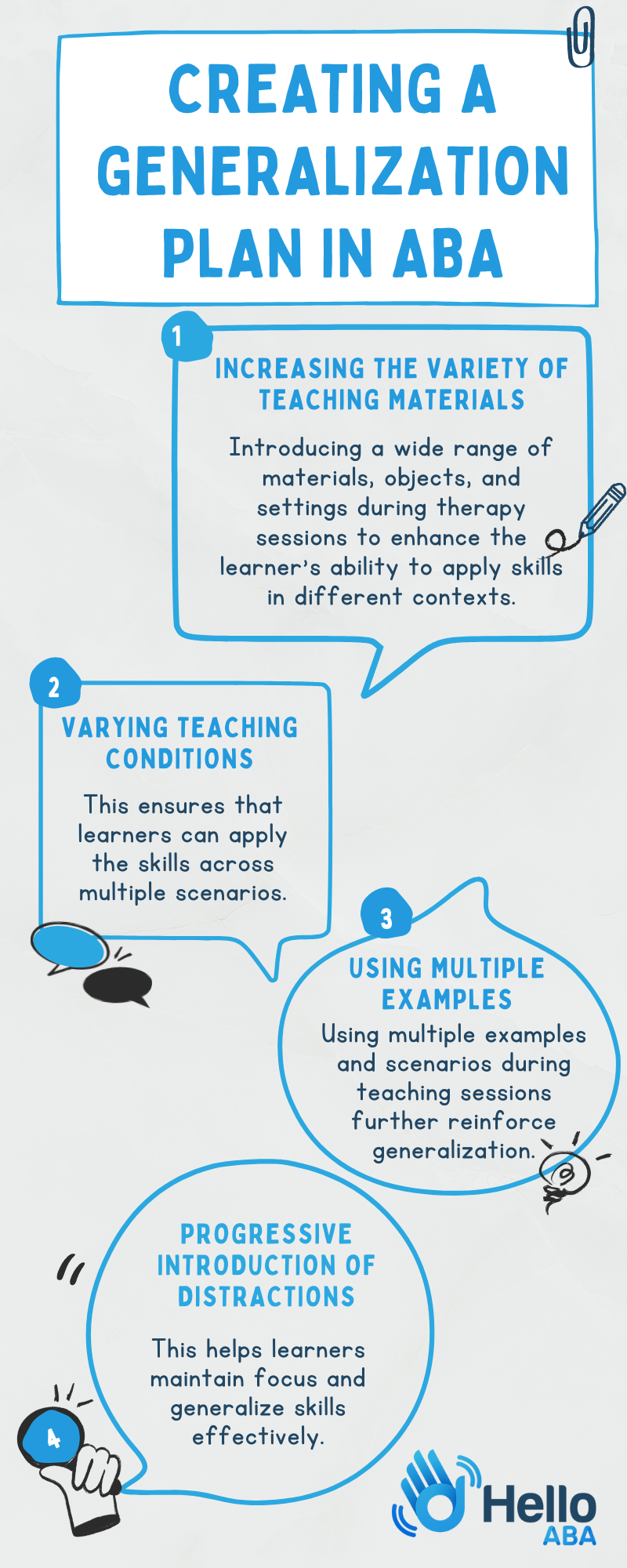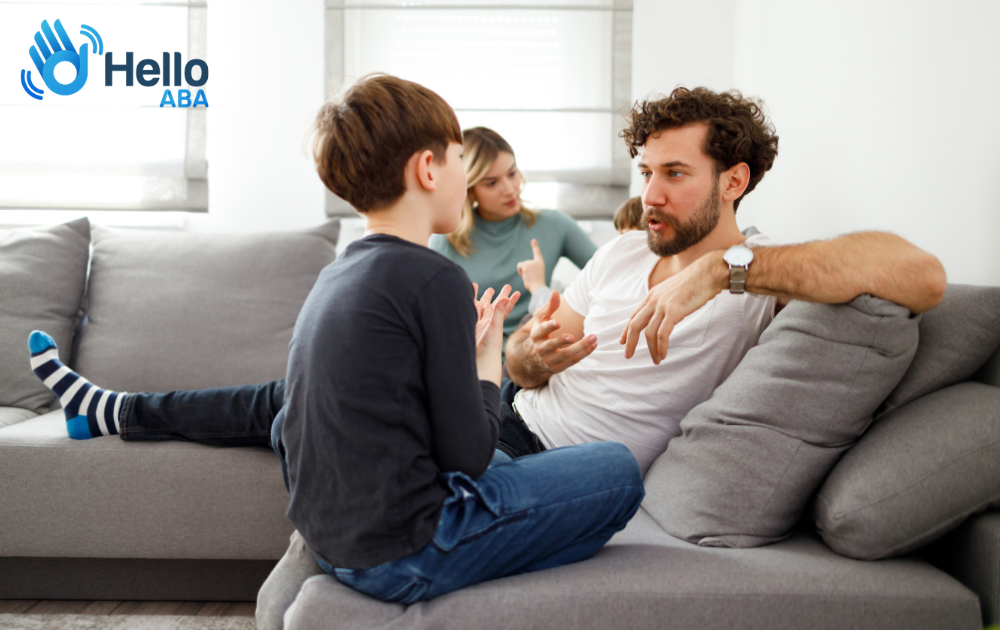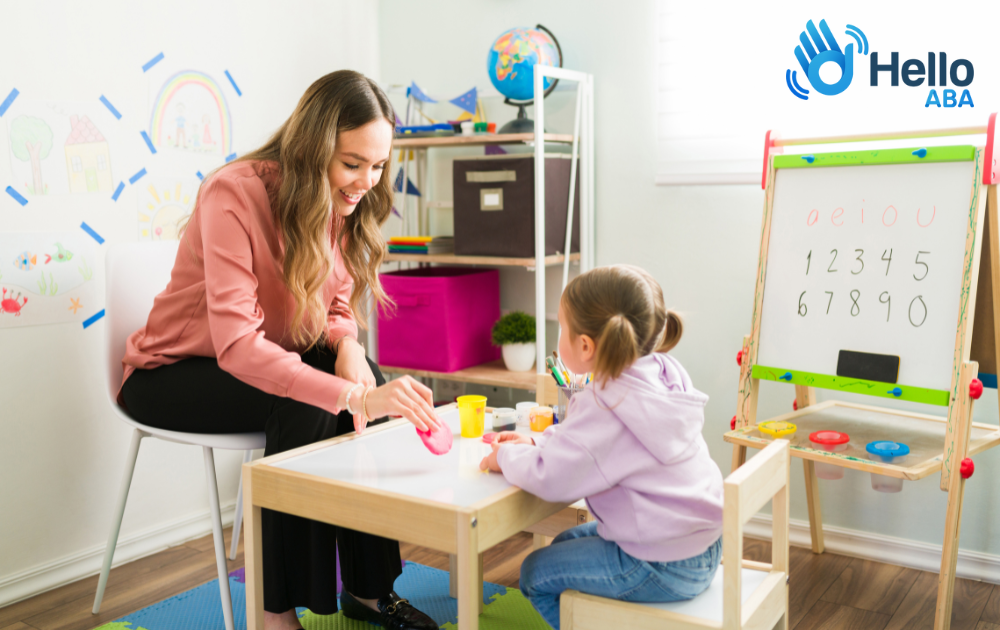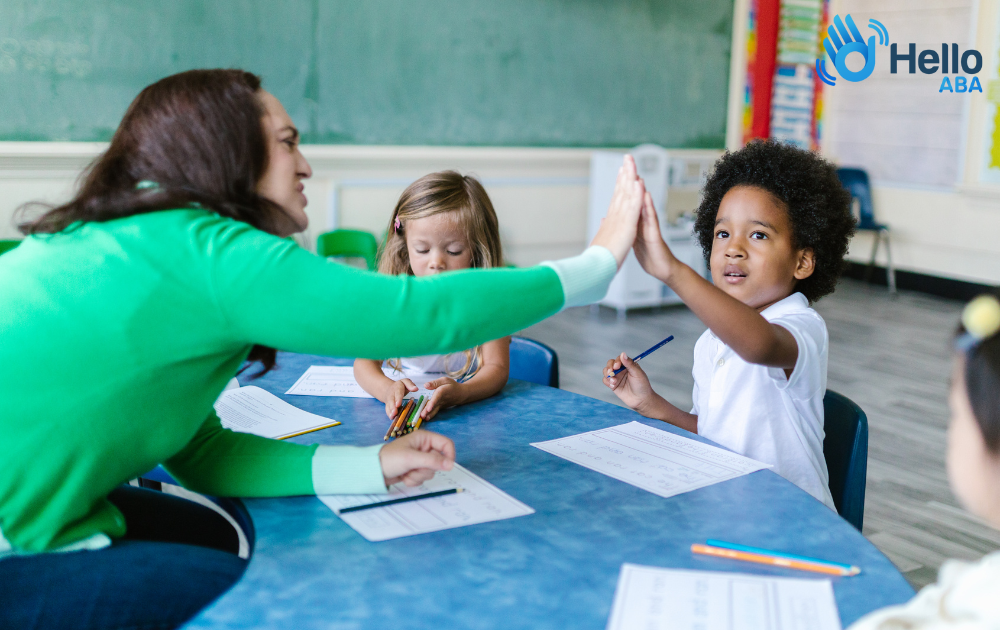In Applied Behavior Analysis (ABA), generalization refers to the ability to transfer and apply learned skills across different environments, people, objects, responses, and geographical locations. It ensures that the behavioral changes observed during therapy are maintained and replicated in real-world settings. There are two primary types of generalization: stimulus generalization and response generalization.
Understanding Stimulus Generalization
Stimulus generalization occurs when an individual demonstrates a learned response to stimuli that are similar to, but not identical to, the ones used during teaching. This means that the individual is able to generalize their response to a broader range of stimuli. For example, if a child learns to identify the color red, they may also be able to identify similar shades of red or objects that are red in color.
Stimulus generalization is an important aspect of ABA as it allows individuals to apply their learned skills to a variety of situations and stimuli. It expands the individual’s repertoire of responses and increases their adaptability in different environments. ABA practitioners utilize strategies to promote stimulus generalization, ensuring that the skills learned in therapy can be applied beyond the teaching setting.

Exploring Response Generalization
Response generalization involves the learner’s ability to utilize learned skills in novel ways or apply them to different but functionally equivalent situations. It goes beyond simply responding to similar stimuli and extends to applying the learned behavior to new contexts. For example, if a child learns to request a preferred item using verbal language, response generalization would involve the child using the same requesting behavior with different items or in different settings.
Response generalization is crucial in ABA as it allows individuals to demonstrate flexibility and adaptability in their behavior. It ensures that the learned skills are not limited to specific situations but can be generalized to a broader range of contexts. ABA practitioners focus on teaching skills in a way that promotes response generalization, enabling individuals to apply their learned behaviors in various real-world scenarios.
Understanding and addressing both stimulus generalization and response generalization, ABA programs aim to ensure that individuals can effectively apply their skills to different environments, people, and situations. Continuous assessment and adjustment of strategies are essential to monitor and enhance progress in generalization. This allows for the transfer of skills learned in therapy to real-world settings, empowering individuals to function independently and successfully in society.
Importance of Generalization in ABA
Generalization plays a crucial role in Applied Behavior Analysis (ABA) programs, ensuring that individuals can apply newly acquired skills beyond the therapy setting. It involves replicating learned positive behaviors across different environments, people, objects, responses, and geographical locations to ensure applicability in real-world situations. Let’s explore the importance of generalization in ABA, including its real-world application of skills and the challenges faced by autistic learners.
Real-World Application of Skills
The ultimate goal of ABA therapy is to help individuals with autism develop skills that they can use in their everyday lives. Generalization is essential for achieving this goal, as it ensures that learned behaviors are not limited to the therapy room but are instead applicable in various environments such as home, school, and the community.
Promoting generalization enables individuals to use their skills effectively and independently in real-world situations. For instance, a child who has learned communication skills in therapy should be able to apply those skills when interacting with family members, peers, and teachers. Generalization allows individuals to utilize their skills across various contexts, thereby enhancing their overall independence and quality of life.
Challenges for Autistic Learners
Autistic learners may face unique challenges when it comes to generalization. The cognitive and perceptual characteristics associated with autism can make it difficult for individuals to recognize similarities and differences between stimuli or generalize skills beyond the specific contexts where they were initially taught.
Due to these challenges, autistic learners may struggle to apply learned behaviors in new and unfamiliar situations. They may require additional support and practice to generalize skills effectively. ABA practitioners are aware of these challenges and work closely with individuals and their families to develop strategies that promote successful generalization.
To address the challenges faced by autistic learners, ABA programs focus on creating a supportive and structured environment that facilitates generalization. It involves using a variety of teaching techniques and incorporating natural environment teaching activities to promote the transfer of skills from therapy settings to real-life situations. By gradually introducing new environments, people, and stimuli during therapy, individuals can practice and generalize their skills in a controlled and systematic manner.
Acknowledging the importance of generalization and addressing the challenges faced by autistic learners, ABA programs can equip individuals with the tools needed to thrive in diverse environments and lead meaningful, independent lives.
Developing a Generalization Plan
A well-developed ABA program includes a generalization plan alongside the teaching plan. This plan outlines specific steps to help learners utilize the skills they have learned during therapy in their everyday lives. The goal is to promote the transfer and application of these skills from the teaching environment to real-life situations.
The generalization plan typically includes strategies such as:

Incorporating these strategies into the generalization plan, ABA practitioners aim to ensure that learned behaviors extend beyond the therapy setting and can be applied effectively in various real-life situations.
Teaching Strategies for Generalization
ABA provides a range of teaching strategies that impact generalization, including both highly natural teaching environments and more structured approaches. These strategies play a crucial role in promoting the generalization of skills. Here are two common teaching strategies used in ABA:
Naturalistic Teaching Methods
Naturalistic teaching methods focus on creating a learning environment that resembles natural settings and encourages learners to apply skills in a more natural and functional manner. One example of a naturalistic teaching method is Pivotal Response Training (PRT), which emphasizes learner initiation, motivation, and natural contingencies. PRT targets pivotal behaviors that have a significant impact on other behaviors, facilitating generalization across various contexts.
Structured Teaching Methods
Structured teaching methods, such as Discrete Trial Training (DTT), involve breaking down skills into smaller, more manageable components and teaching them systematically through repeated trials. While DTT is often associated with ABA therapy, it is important to note that discrete trial training is just one component of ABA. By employing structured teaching methods, learners can develop a solid foundation of skills that can be generalized across different settings and situations.
Combining naturalistic and structured teaching methods, ABA practitioners can create an effective learning environment that promotes generalization and enables individuals to apply learned skills in various contexts.

Implementing Generalization Training
In order to maximize the effectiveness of Applied Behavior Analysis (ABA) programs, it is crucial to implement strategies for generalization training. This involves transferring the skills learned in a controlled environment to different environments and involving family and caregivers in the learning process.
Transferring Skills to Different Environments
Generalization in ABA entails replicating learned behaviors across various environments, people, objects, responses, and geographical locations to ensure the applicability of skills in real-life situations. It is essential for learners to be able to demonstrate these skills not only in the therapy setting but also in their everyday lives, such as at home, school, and in the community. This transfer of skills allows for a more meaningful and functional application of ABA techniques.
To facilitate the transfer of skills, it is important to develop a plan for generalization along with the teaching plan. This plan outlines steps to help learners apply the skills they have learned in different environments. This may involve gradually fading prompts and supports, providing opportunities for practice in various settings, and incorporating real-life situations into the teaching process. By systematically exposing learners to different environments and situations, they can generalize their skills and become more independent.
Involving Family and Caregivers
Family and caregivers play a crucial role in the generalization of skills learned through ABA. Involving them in the learning process helps ensure that the skills are reinforced and practiced consistently across different settings. When family members and caregivers are actively involved, learners have more opportunities to apply their skills and generalize them to everyday life.
Providing training and guidance to family members and caregivers empowers them to support the learner’s progress and reinforce the skills taught during ABA sessions. This may involve teaching specific strategies and techniques for use at home, providing resources and materials, and creating opportunities for practice and generalization. Involving family and caregivers fosters a collaborative approach to learning and enhances the overall effectiveness of the intervention.
Implementing generalization training is essential in ABA programs to ensure that learners can apply their skills in various environments and situations. By systematically transferring skills to different settings and involving family and caregivers in the learning process, ABA becomes more meaningful and applicable to real-life situations. Continuous assessment and adjustment of strategies are crucial to monitor the progress of generalization and ensure that learners can function independently and successfully in different contexts.

Continuous Assessment in ABA
In Applied Behavior Analysis (ABA), continuous assessment and adjustment of strategies play a critical role in ensuring effective generalization of skills. Monitoring generalization progress and making necessary adjustments are essential for promoting the transfer of learned behaviors across different environments, ultimately improving an individual’s ability to function independently in society.
Monitoring Generalization Progress
Continuous monitoring of generalization progress is crucial in ABA to track how well individuals are applying their learned behaviors in new and diverse situations. ABA practitioners closely observe and collect data on the individual’s performance outside of the controlled therapy setting, such as at home, school, or in the community. This allows for an assessment of the extent to which behaviors are being generalized across various contexts.
Monitoring generalization progress typically involves:
- Conducting regular observations in natural environments to assess whether the individual is demonstrating the targeted behaviors consistently and independently.
- Collecting data on the frequency, duration, and quality of the behavior in different settings to evaluate the level of generalization achieved.
- Utilizing standardized assessment tools to objectively measure the individual’s progress in applying skills across diverse environments.
Continually monitoring generalization progress allows ABA practitioners to identify areas that require further attention and adjustment in the intervention plan.

Adjusting Strategies for Effective Generalization
Adjusting strategies is a crucial step in promoting effective generalization. As individuals with autism face challenges in applying learned behaviors in new and unpredictable situations, it is essential to adapt the intervention strategies to facilitate successful generalization. ABA practitioners continuously assess and modify the strategies based on the individual’s progress and needs.
Some strategies for promoting effective generalization in ABA programs include:
- Varying the settings: Introducing the targeted behaviors in different real-world environments, such as home, school, and community settings, helps individuals transfer and apply the skills across various contexts.
- Involving family and caregivers: Collaborating with family members and caregivers is vital for generalization. ABA practitioners work closely with parents and caregivers to ensure consistency and generalization of skills beyond the therapy sessions. Providing training and support to family members helps them reinforce and encourage the use of learned behaviors in everyday situations.
- Utilizing naturalistic teaching methods: Naturalistic teaching methods, such as Natural Environment Teaching, focus on teaching skills in the individual’s natural environment using meaningful activities and natural cues. This approach enhances the likelihood of generalization by making the learned behaviors more functional and applicable to real-life situations.
- Implementing structured teaching methods: Structured teaching methods provide individuals with clear and structured instructions, visual supports, and routines. This helps them generalize their skills by providing consistency and predictability across different environments.
Continuously assessing and adjusting strategies allows ABA practitioners to optimize generalization outcomes and support individuals with autism in effectively applying their learned behaviors across various real-world settings.
Overall, continuous assessment and adjustment of strategies are essential in ABA to monitor generalization progress and ensure the transfer of skills across different environments. By closely monitoring progress and making necessary adjustments, ABA programs can promote effective generalization and enhance the independence and quality of life for individuals with autism.
Hello ABA provides expert ABA therapy in Maryland, ensuring personalized care and support. Contact us today to book an appointment or schedule a consultation.
Sources:
- https://www.linkedin.com/pulse/generalization-training-procedures-aba-oyindrila-basu-prvoe/
- https://ksdetasn.s3.amazonaws.com/uploads/resource/upload/3323/Generalization.pdf
- https://icd.binghamton.edu/media/brcasd/Promoting_Generalization.pdf
- https://masteraba.com/strategies-impact-generalization/
- https://www.milestones.org/files/legacy/2014/06/Strategies-to-Improve-Generalization.pdf






